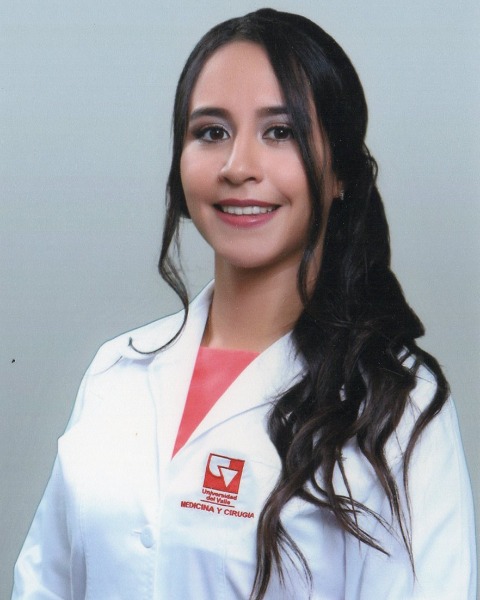Infectious Diseases
Category: Abstract Submission
Infectious Diseases: MIS-C & Kawasaki Disease
537 - Multisystem Inflammatory Syndrome in Children associated with COVID-19: A comparison study between cohorts from different geographic locations.
Sunday, April 24, 2022
3:30 PM - 6:00 PM US MT
Poster Number: 537
Publication Number: 537.327
Publication Number: 537.327
Catalina De La Cruz, CEIP, Cali, Valle del Cauca, Colombia; Alexander H. Hogan, Connecticut Children's Medical Center, Hartford, CT, United States; Katherine W. Herbst, Connecticut Children's Medical Center, Hartford, CT, United States; Diana M. Dávalos, Centro de Estudios en Infectologia Pediatrica, Cali, Valle del Cauca, Colombia; Eduardo López-Medina, Centro de Estudios en Infectología Pediátrica, CEIP, Cali, Valle del Cauca, Colombia; Juan C. Salazar, University of Connecticut School of Medicine, Hartford, CT, United States

Catalina De La Cruz, MD
Subinvestigator
CEIP
Cali, Valle del Cauca, Colombia
Presenting Author(s)
Background: The infection-related condition multisystem inflammatory syndrome in children (MIS-C) may differ in children from diverse geographical regions.
Objective: To evaluate the sociodemographic and clinical differences between hospitalized children in the United States vs. Colombia.
Design/Methods: Multicenter prospective observational study of children diagnosed with MIS-C and enrolled between 4/1/2020 and 12/31/2021 at one US site (Connecticut Children’s Medical Center [CT cohort]) and two Colombian sites (Clínica Imbanaco [CI] and Hospital Universitario del Valle [HUV] in Cali, Colombia [CI/HUV cohort]). This report is restricted to patients who met the MIS-C criteria according to the US CDC definition. Information on sociodemographic, clinical, and paraclinical characteristics were collected using a standardized, online case collection form developed in REDCap. Cohorts were compared using Fisher’s Exact test or Mann-Whitney U test as appropriate.
Results: Forty-eight MIS-C cases were included, 34 in CT and 14 in CI/HUV. Median age was 9.5 years (IQR 5.3-13.0), 27 (56%) were male, and almost one-third had a co-morbid condition. Besides expected race/ethnicity differences, the only demographic difference was a higher median BMI in the CT cohort. Overall, most children presented with fever, mucocutaneous findings, or gastrointestinal symptoms. No children were hypoxic at admission, but 15% had systolic hypotension. More children in the CI/HUV cohort presented with upper respiratory symptoms compared to the CT cohort (86% vs 24% respectively) while fewer presented with systemic symptoms (29% vs 77% respectively). Laboratory and radiologic findings were similar across both cohorts, except for a higher neutrophil to lymphocyte ratio in the CT cohort. Children in the CT cohort received intravenous immunoglobulin (IVIg), steroids, combined IVIg/steroids, and antibiotics more frequently than patients in the CI/HUV cohort. Outcomes were similar across both cohorts, except for a higher frequency of prolonged hospital stay (>6 days) in the CI/HUV cohort (Table).Conclusion(s): Despite comparable demographic and clinical characteristics overall, and different interventions in both cohorts, outcomes were similar except for longer hospital stays in the CI/HUV cohort. Further data from a larger sample size are needed to understand whether differences between these cohorts are intrinsic to the patient populations, or different management protocols among institutions.
Objective: To evaluate the sociodemographic and clinical differences between hospitalized children in the United States vs. Colombia.
Design/Methods: Multicenter prospective observational study of children diagnosed with MIS-C and enrolled between 4/1/2020 and 12/31/2021 at one US site (Connecticut Children’s Medical Center [CT cohort]) and two Colombian sites (Clínica Imbanaco [CI] and Hospital Universitario del Valle [HUV] in Cali, Colombia [CI/HUV cohort]). This report is restricted to patients who met the MIS-C criteria according to the US CDC definition. Information on sociodemographic, clinical, and paraclinical characteristics were collected using a standardized, online case collection form developed in REDCap. Cohorts were compared using Fisher’s Exact test or Mann-Whitney U test as appropriate.
Results: Forty-eight MIS-C cases were included, 34 in CT and 14 in CI/HUV. Median age was 9.5 years (IQR 5.3-13.0), 27 (56%) were male, and almost one-third had a co-morbid condition. Besides expected race/ethnicity differences, the only demographic difference was a higher median BMI in the CT cohort. Overall, most children presented with fever, mucocutaneous findings, or gastrointestinal symptoms. No children were hypoxic at admission, but 15% had systolic hypotension. More children in the CI/HUV cohort presented with upper respiratory symptoms compared to the CT cohort (86% vs 24% respectively) while fewer presented with systemic symptoms (29% vs 77% respectively). Laboratory and radiologic findings were similar across both cohorts, except for a higher neutrophil to lymphocyte ratio in the CT cohort. Children in the CT cohort received intravenous immunoglobulin (IVIg), steroids, combined IVIg/steroids, and antibiotics more frequently than patients in the CI/HUV cohort. Outcomes were similar across both cohorts, except for a higher frequency of prolonged hospital stay (>6 days) in the CI/HUV cohort (Table).Conclusion(s): Despite comparable demographic and clinical characteristics overall, and different interventions in both cohorts, outcomes were similar except for longer hospital stays in the CI/HUV cohort. Further data from a larger sample size are needed to understand whether differences between these cohorts are intrinsic to the patient populations, or different management protocols among institutions.
Designed by Cadmium
|Technical Support
© Copyright 2025 Cadmium. All Rights Reserved.
